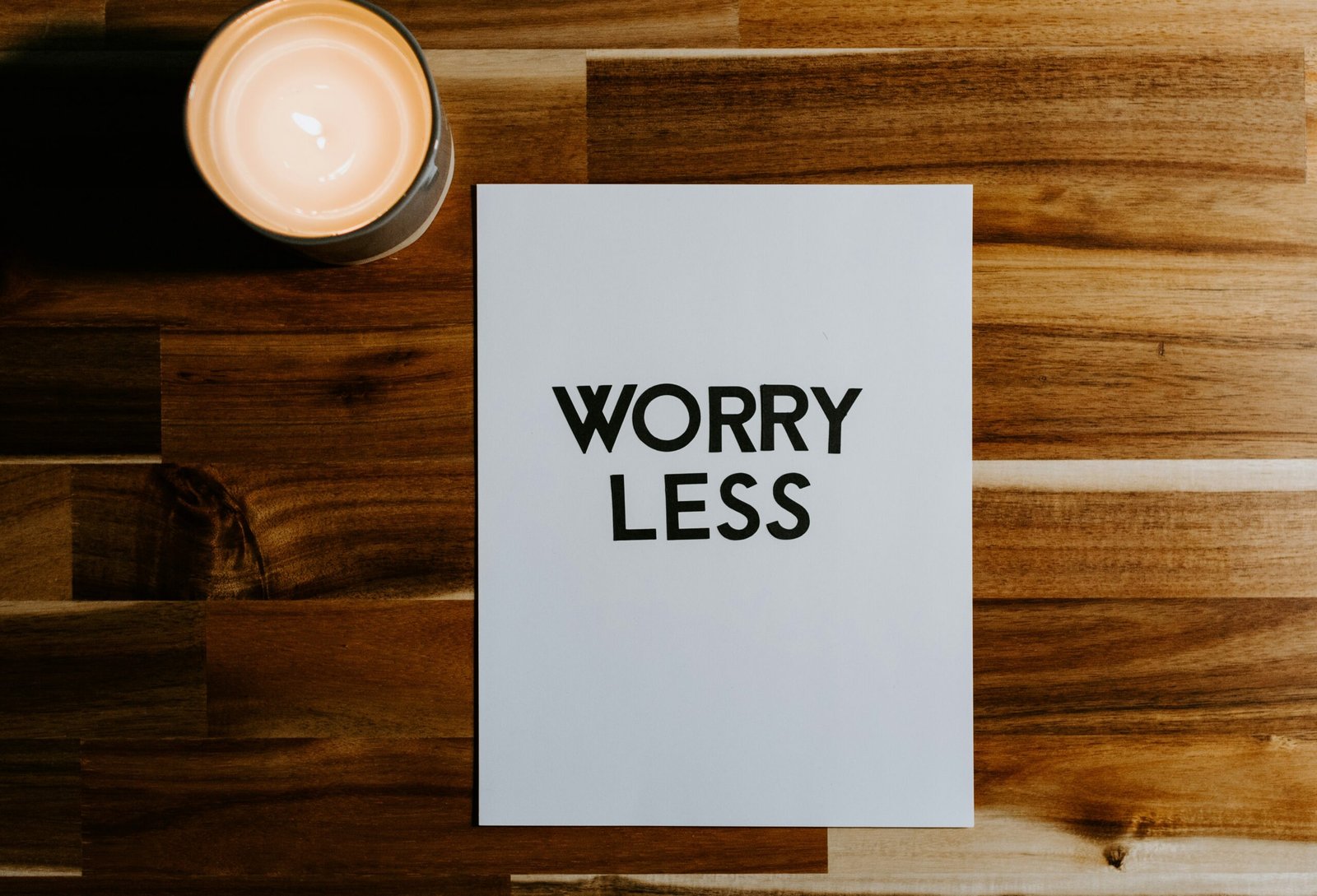Introduction to Building Trust and Conflict Resolution
Trust stands as a cornerstone of effective leadership. In any organizational setup, the ability to foster and maintain trust not only strengthens team cohesion but also enhances overall productivity. Leaders who garner trust are often better positioned to guide their teams through conflicts and challenges, interpreting these situations as opportunities for growth and development. Building trust involves demonstrating integrity, consistency, and reliability, thereby crafting a foundation on which strong, professional relationships can be established.
The role of a leader is inherently complex, requiring a balance between achieving organizational goals and nurturing a positive, collaborative environment. Amidst these responsibilities, conflict is an inevitable occurrence. Whether stemming from differing viewpoints, competition for resources, or misunderstandings, conflicts can either weaken team dynamics or, if managed adeptly, reinforce the bonds of trust. Thus, conflict resolution is an essential skill for leaders striving to maintain a harmonious, effective workplace.
Effective conflict resolution goes beyond merely addressing disputes; it involves understanding the underlying issues, facilitating open communication, and working collaboratively towards mutually beneficial solutions. Leaders who can handle conflicts gracefully often find their credibility and trustworthiness amplified, as their teams recognize their commitment to fairness and transparency. Therefore, mastering conflict resolution techniques not only resolves immediate issues but fosters a resilient environment capable of navigating future challenges.
This blog post delves into ten actionable strategies that leaders can employ to resolve conflicts while simultaneously building and sustaining trust within their teams. By integrating these practices into their leadership approach, leaders can enhance their ability to mitigate conflicts, cultivate a trusted team dynamic, and drive overall organizational success. From promoting open dialogue to establishing clear conflict resolution processes, these strategies will serve as a comprehensive guide for leaders aiming to excel in conflict management and trust-building.
Understanding the Role of Trust in Leadership
In the realm of leadership, trust serves as a cornerstone for building strong, effective teams. When trust is present, team dynamics flourish, as members feel confident in voicing their opinions and making decisions. This, in turn, fosters an environment where innovation and collaboration are the norm rather than the exception. The impact of trust on employee engagement is profound; engaged employees are more likely to go above and beyond in their roles, contributing to a culture of excellence and driving organizational success.
Consider the example of Satya Nadella, CEO of Microsoft. His leadership style has been credited with reinvigorating the company by fostering a culture of trust and empathy. Nadella’s emphasis on listening and being open to feedback has broken down silos within the organization and encouraged a more united and innovative workforce. This trust-based leadership approach has not only improved internal dynamics but also led to significant advancements in Microsoft’s market performance.
Another illustrative example is Howard Schultz, the former CEO of Starbucks. Schultz’s ability to build trust within his team was crucial when navigating the company through challenging periods. By prioritizing transparent communication and truly valuing employee input, Schultz built a loyal and dedicated workforce. The result was a resilient organization capable of weathering economic downturns and emerging stronger.
The positive outcomes of trust abound. Teams that operate in a trust-rich environment show higher levels of collaboration, lower turnover rates, and increased employee satisfaction. Trust enables employees to feel secure in taking risks and innovating, knowing that their leaders have their backs. Therefore, understanding and actively nurturing trust not only fortifies team cohesion but also propels the organization toward sustained success.
Recognizing and Addressing Sources of Conflict
Identifying the common sources of conflict within the workplace is a crucial initial step in effective conflict resolution. Intrinsic factors such as differences in values, miscommunication, and competition for resources frequently lead to disputes among team members. Recognizing these sources early can prevent minor disagreements from escalating into significant conflicts, thereby fostering a more harmonious work environment.
Differences in values can drive wedges between colleagues when their personal convictions or ethical standards clash. This discrepancy becomes pronounced in diverse teams, where varied cultures and backgrounds contribute to a melting pot of values. Addressing this source of conflict involves cultivating an organizational culture that promotes mutual respect and understanding. Encouraging open discussions about personal values and fostering a climate of inclusivity are proactive steps in mitigating value-based conflicts.
Miscommunication stands out as a prevalent source of conflict. Errors in conveying information, misunderstandings, and lack of clear communication channels can lead to confusion and frustration among team members. To address this, it is essential to implement robust communication protocols. Regular team meetings, clear and concise messaging, and encouraging feedback can significantly reduce the likelihood of miscommunication. Training team members in effective communication techniques, such as active listening and assertiveness, can also be beneficial.
Competition for resources is another frequent cause of workplace conflict. When employees perceive that their access to necessary resources is limited by others, animosity can develop. Establishing fair allocation policies and ensuring transparency in resource distribution can help alleviate this form of conflict. Leaders should also encourage collaborative approaches to resource management, where team members work together to optimize available assets.
Proactively addressing potential conflicts requires a strategic approach. Leaders can implement conflict resolution training, develop clear policies, and create open communication channels to identify and defuse issues early. Regularly monitoring team dynamics and fostering an environment where concerns can be voiced without fear of retribution significantly contributes to a culture of trust and cooperation. Effective conflict resolution is not only about addressing disputes when they arise but also about recognizing and mitigating potential sources of conflict before they escalate.
Active Listening and Empathy
Active listening and empathy are fundamental components in the realm of conflict resolution. Leaders who practice active listening and demonstrate empathy towards their team members not only manage disputes more efficiently but also cultivate a trust-based work environment. Active listening involves fully concentrating, understanding, responding, and then remembering what the other party has communicated. It goes beyond mere hearing; it signifies being genuinely engaged in the conversation.
To enhance active listening skills, leaders should employ several key techniques. Firstly, maintaining eye contact and nodding affirmatively can show attentiveness. Secondly, refraining from interrupting the speaker ensures that the conversation flows naturally and that all points are clearly understood. Additionally, asking open-ended questions such as “Can you please elaborate on that?” or “How did that make you feel?” can encourage deeper dialogue and comprehension.
Empathy, an essential counterpart to active listening, involves understanding and sharing the feelings of others. Demonstrating empathy means recognizing the emotions of team members without judgment. Leaders can show empathy by validating the emotions of involved parties, saying, for example, “I understand that you’re frustrated with this situation.” Over time, these empathetic interactions contribute to a culture where team members feel valued and understood.
Practical examples of active listening and empathy in action can illustrate how these practices build trust and resolve conflicts effectively. Consider a scenario where two employees are in dispute over project responsibilities. A leader practicing active listening would allocate time to hear both sides, ensuring each employee feels heard and understood. By expressing empathy, such as acknowledging the stress both individuals may feel, the leader can diffuse tension and guide the conversation towards a mutually beneficial resolution.
In conclusion, incorporating active listening and empathy into leadership practices not only resolves conflicts more swiftly but also fosters an environment where trust and mutual respect flourish, paving the way for a harmonious and productive workplace.
Mediating Conflicts: Techniques and Approaches
Mediating conflicts effectively is a critical skill for leaders aiming to build trust and achieve harmony within their teams. A range of techniques and approaches can be employed to navigate disputes, ensuring a constructive resolution and maintaining positive relationships. Among these, facilitating open dialogue, employing non-confrontational language, and striving for win-win solutions are paramount.
Firstly, facilitating open dialogue is essential. Leaders should create a safe and inclusive environment where all parties feel comfortable expressing their views. This involves active listening, showing empathy, and withholding judgment while each person speaks. Encouraging transparency helps uncover underlying issues and fosters mutual understanding, paving the way for collaborative solutions.
Using non-confrontational language is another vital strategy. The language utilized during mediation can significantly impact the outcome. Leaders should phrase their statements in a manner that avoids blaming or accusing any party. Instead, focus on “I” statements to convey concerns without attributing fault, for example, “I feel concerned when deadlines are missed,” rather than “You always miss deadlines.” This approach helps de-escalate tension and promotes a more open exchange of viewpoints.
Seeking win-win solutions is crucial for sustainable conflict resolution. This approach ensures that all parties benefit from the resolution, demonstrating fairness and consideration. Leaders should encourage involved members to collaboratively brainstorm potential solutions, evaluating each for mutual benefit. This not only helps resolve the immediate issue but also reinforces a cooperative culture, enhancing overall team morale and trust.
Practical steps for successful conflict mediation include clearly defining the problem, encouraging open communication, maintaining neutrality, exploring various alternatives, and facilitating agreement on a viable solution. Leaders should offer consistent feedback throughout the process and monitor the resolution’s implementation to ensure its efficacy.
By mastering these mediation techniques and approaches, leaders can effectively resolve conflicts, foster a harmonious work environment, and build lasting trust within their teams.
Fostering a Collaborative Environment
A collaborative work environment is fundamental in minimizing conflicts and enhancing team functionality. Leaders play a pivotal role in shaping such an environment, primarily through the promotion of teamwork, transparent communication, and the establishment of clear expectations. These practices collectively build an atmosphere of mutual respect and trust among team members, paving the way for effective conflict resolution.
Promoting teamwork is essential in fostering collaboration. When team members are encouraged to work together towards common goals, it naturally cultivates a sense of unity and shared purpose. Leaders can facilitate this by organizing team-building activities, promoting inter-departmental projects, and recognizing collective achievements. Such efforts not only enhance camaraderie but also strengthen the team’s problem-solving capabilities, which are crucial in navigating potential conflicts.
Encouraging transparent communication is another key strategy. Open lines of communication ensure that team members feel heard and valued, reducing misunderstandings and grievances. Leaders should foster a culture where feedback is both given and received constructively, and where concerns can be voiced without fear of retribution. Regular meetings, open-door policies, and transparent decision-making processes are practical ways to embed this into the organizational culture.
Setting clear expectations is also critical for collaboration and conflict minimization. When roles, responsibilities, and goals are clearly defined, it eliminates ambiguity that often leads to conflict. Leaders should ensure that all team members understand their individual and collective responsibilities and the metrics by which their performance will be assessed. This can be achieved through detailed onboarding processes, regular check-ins, and comprehensive project briefs.
By promoting teamwork, encouraging transparent communication, and setting clear expectations, leaders can create a collaborative environment that not only minimizes conflicts but also fosters mutual respect and trust. These actions lay a solid foundation for resolving disputes efficiently and maintaining a harmonious work atmosphere.
Establishing Clear Policies and Procedures
In any organization, the establishment of clear policies and procedures is essential for effective conflict resolution. Well-defined guidelines provide a structured framework that promotes consistency and fairness in handling disputes, a cornerstone for building trust among team members. By delineating specific steps and protocols, organizations can ensure that all conflicts are treated with impartiality and transparency, mitigating biases and fostering a sense of security and trust.
Clear policies and procedures serve several critical functions. Firstly, they set expectations for behavior and outline the repercussions of non-compliance, dissuading potential conflicts. Secondly, in the event of a dispute, these guidelines act as a reference point for both employees and managers, delineating the resolution process and timeframe. This ensures that all parties are aware of their rights and responsibilities, reinforcing fairness and accountability.
An effective conflict resolution policy typically includes essential elements such as a definition of what constitutes a conflict, steps for informal and formal resolution, timelines for each stage, and confidentiality clauses to protect the involved parties’ privacy. For instance, an effective policy might specify that initial conflict resolution attempts should focus on direct communication between the parties involved, followed by mediation if necessary, and eventually escalating to more formal procedures like grievance committees should earlier steps fail.
Organizations that implement well-crafted conflict resolution policies often witness several positive impacts. For example, the introduction of a comprehensive conflict resolution policy at a tech firm led to a 20% decrease in inter-departmental conflicts within one year, illustrating how structured procedures can enhance trust and collaboration. Employees in such environments tend to feel more valued and respected, knowing there’s a reliable system to address their concerns, leading to improved morale and productivity.
In conclusion, establishing clear policies and procedures is fundamental for cultivating a culture of trust and respect within an organization. By providing a dependable framework for conflict resolution, leaders can ensure that disputes are managed consistently and equitably, ultimately fostering a more harmonious and productive workplace.
Continuous Improvement and Feedback Loops
The essence of building trust as a leader hinges significantly on the practice of continuous improvement and the establishment of effective feedback loops. In conflict resolution, it is imperative to not only address issues as they arise but also to continuously refine strategies to ensure they are both effective and relevant. Leaders who prioritize ongoing enhancement in their conflict resolution approaches cultivate an environment of trust and reliability within their teams.
Feedback loops serve as a vital mechanism for leaders to gauge the effectiveness of their conflict resolution strategies. By incorporating both formal and informal feedback from team members, leaders can gain a comprehensive understanding of the outcomes of their interventions. This, in turn, allows for timely adjustments and improvements in their methods. Utilizing anonymous surveys, regular one-on-one meetings, and team discussions can effectively gather feedback. These avenues provide a platform for employees to express their perspectives, concerns, and suggestions, thereby fostering an open communicative culture.
One practical method for leaders to gather feedback is through the implementation of regular, structured reflection sessions following conflict resolution activities. During these sessions, team members can discuss what worked well and what could be improved. Additionally, leaders can use performance metrics and key indicators to objectively assess the impact of their strategies. This data-driven approach ensures that improvements are based on tangible evidence rather than mere speculation.
Moreover, leaders should emphasize the importance of transparency when it comes to making adjustments based on feedback. Sharing the rationale behind changes and acknowledging the contributions of team members in the process can reinforce trust. It underscores a leader’s commitment to not only resolving conflicts but also evolving for the betterment of the team’s dynamics.
Incorporating continuous improvement and feedback loops in conflict resolution not only fine-tunes the efficacy of strategies but also demonstrates a leader’s dedication to fostering a trustful and resilient team. This iterative process of receiving feedback and making informed adjustments cements the foundation of trust and enhances overall team cohesion and productivity.
Case Studies and Real-World Examples
Analyzing case studies and real-world examples of leaders who have effectively built trust and resolved conflicts can provide invaluable insights into the practical application of best practices in conflict resolution. Here, we examine a few notable cases to illustrate these principles in action.
Case Study 1: Howard Schultz at Starbucks
Recognized for his exceptional leadership, Howard Schultz, former CEO of Starbucks, exemplified trust-building and adept conflict resolution. When Schultz returned to the helm in 2008 amid an economic downturn, Starbucks faced numerous internal conflicts due to employee dissatisfaction and operational inefficiencies. Schultz’s approach was rooted in transparency and communication. He initiated open forums, encouraged feedback from all levels, and made efforts to be present and visible within the company. By doing so, he restored confidence among employees and minimized conflicts, leading to a revitalized organizational culture. Key takeaways from Schultz’s example include the importance of transparent communication and active engagement in resolving conflicts.
Case Study 2: Satya Nadella at Microsoft
Satya Nadella’s tenure as CEO of Microsoft is another compelling example. Upon taking over in 2014, Nadella navigated a company rife with internal division and a stagnating product line. His strategy emphasized empathy and collaboration. Nadella championed a growth mindset and fostered a culture of inclusivity and teamwork. By prioritizing empathy in his conflict resolution strategies, he effectively bridged gaps between differing factions and cultivated a more harmonious and productive work environment. The primary lesson here is the power of empathy and fostering a collaborative atmosphere in resolving conflicts and building trust.
Case Study 3: Mary Barra at General Motors
Mary Barra, CEO of General Motors, faced significant challenges in the wake of the company’s recall crisis. Her handling of the situation is a textbook case of conflict resolution and trust-building. Barra insisted on full transparency, promptly addressing the issues and communicating openly with both employees and the public. She implemented comprehensive safety measures and fostered a culture of accountability. Barra’s decisive actions and transparent communication helped reestablish trust both within the company and externally. From Barra’s example, we learn the vital role of accountability and decisive action in conflict resolution.
These case studies highlight the successful application of conflict resolution strategies by distinguished leaders. From transparency and communication to empathy and accountability, these examples underline the multifaceted approach required to navigate conflicts and build enduring trust within an organization.
Conclusion: The Path Forward
In reviewing the top ten conflict resolution strategies for building trust as a leader, it becomes evident that the cornerstone of successful leadership lies in effective communication and a commitment to fostering a positive work environment. Adopting these strategies not only helps in resolving conflicts but also in building a foundation of trust within your team. Among the key points discussed, emphasizing empathy, maintaining transparency, and encouraging open dialogue stand out as essential practices.
Additionally, the importance of being proactive in conflict resolution cannot be understated. By addressing issues promptly and fairly, leaders can prevent minor disagreements from escalating into major disputes. Employing active listening techniques, seeking mutually beneficial solutions, and understanding the underlying causes of conflicts are critical steps in this process. Furthermore, demonstrating consistency in your actions and decisions helps to establish credibility and reliability, which are pivotal elements in trust-building.
As leaders, it is imperative to continuously cultivate these skills. The work environment is ever-evolving, and so too should be our approach to conflict resolution. Integrating these best practices will not only enhance team morale but also drive productivity and innovation. Encouraging team members to voice their opinions and concerns fosters an inclusive culture where everyone feels valued and respected, thus strengthening the collective trust within the organization.
Therefore, I urge all leaders to implement these strategies diligently and to remain committed to personal growth in these areas. By doing so, you will be better equipped to navigate conflicts effectively, build enduring trust, and lead your team towards sustained success. Start today by assessing your current conflict resolution techniques and identify areas for improvement. Your dedication to becoming a more trusting and effective leader will undoubtedly pave the way for a harmonious and thriving workplace.






